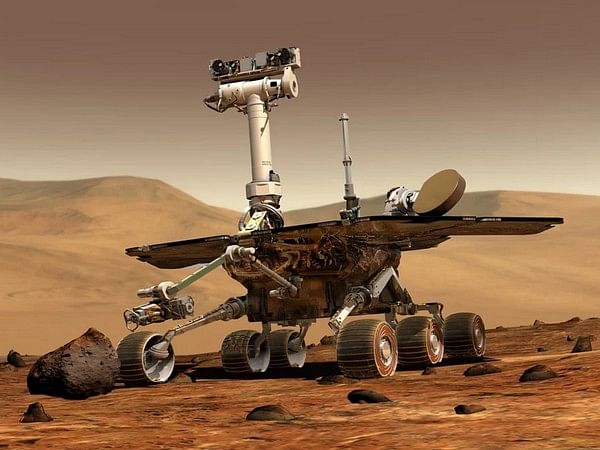Washington [US], September 5 (ANI): NASA’s MAVEN and the United Arab Emirates’ EMM missions have released joint observations of dynamic proton aurora events at Mars. By combining the observations, scientists determined that what they were seeing was essentially a map of where the solar wind was raining down onto the planet, opening new avenues for understanding the Martian atmosphere.
In the new study, EMM discovered fine-scale structures in proton aurora that spanned the full day side of Mars. Proton aurora, discovered by MAVEN in 2018, are a type of Martian aurora that form as the solar wind, made up of charged particles from the Sun, interacts with the upper atmosphere. Typical proton aurora observations made by MAVEN and ESA’s (the European Space Agency) Mars Express mission show these aurora appearing smooth and evenly distributed across the hemisphere. By contrast, EMM observed proton aurora that appeared highly dynamic and variable. These “patchy proton aurora” form when turbulent conditions around Mars allow the charged particles to flood directly into the atmosphere and glow as they slow down.
“EMM’s observations suggested that the aurora was so widespread and disorganized that the plasma environment around Mars must have been truly disturbed, to the point that the solar wind was directly impacting the upper atmosphere wherever we observed auroral emission,” said Mike Chaffin, a MAVEN and EMM scientist based at the Laboratory for Atmospheric and Space Physics at the University of Colorado Boulder and lead author of the study. “By combining EMM auroral observations with MAVEN measurements of the auroral plasma environment, we can confirm this hypothesis and determine that what we were seeing was essentially a map of where the solar wind was raining down onto the planet.”
Normally it is difficult for the solar wind to reach Mars’ upper atmosphere because it is redirected by the bow shock and magnetic fields surrounding the planet. The patchy proton aurora observations are therefore a window into rare circumstances — ones during which the Mars-solar wind interaction is chaotic. “The full impact of these conditions on the Martian atmosphere is unknown, but EMM and MAVEN observations will play a key role in understanding these enigmatic events,” said Chaffin.
The data-sharing between MAVEN and EMM has enabled scientists to determine the drivers behind the patchy proton aurora. EMM carries the Emirates Mars Ultraviolet Spectrograph (EMUS) instrument, which observes the Red Planet’s upper atmosphere and exosphere, scanning for variability in atmospheric composition and atmospheric escape to space. MAVEN carries a full suite of plasma instruments, including the Magnetometer (MAG), the Solar Wind Ion Analyzer (SWIA), and the SupraThermal And Thermal Ion Composition (STATIC) instrument used in this study.
“EMM’s global observations of the upper atmosphere provide a unique perspective on a region critical to MAVEN science,” said MAVEN Principal Investigator Shannon Curry, of UC Berkeley’s Space Sciences Laboratory. “These types of simultaneous observations probe the fundamental physics of atmospheric dynamics and evolution and highlight the benefits of international scientific collaboration.”
EMM Science Lead Hessa Al Matroushi agreed. “Access to MAVEN data has been essential for placing these new EMM observations into a wider context,” she said. “Together, we’re pushing the boundaries of our existing knowledge not only of Mars, but of planetary interactions with the solar wind.”
Multi-vantage-point measurements have already proven to be an asset in Earth and heliophysics research. At Mars, over half a dozen orbiters are now taking science observations and with Mars’ southern hemisphere currently experiencing summer, when proton aurora is known to be most active, multi-vantage-point observations will be critical to understanding how these events form. The collaboration between EMM and MAVEN demonstrates the value of discovery-level science about the Martian atmosphere with two spacecraft simultaneously observing the same region.
MAVEN’s principal investigator is based at the University of California, Berkeley, while NASA’s Goddard Space Flight Center in Greenbelt, Maryland, manages the MAVEN mission. Lockheed Martin Space built the spacecraft and is responsible for mission operations. NASA’s Jet Propulsion Laboratory in Southern California provides navigation and Deep Space Network support. The Laboratory for Atmospheric and Space Physics (LASP) at the University of Colorado Boulder is responsible for managing science operations and public outreach and communication. (ANI)
This report is auto-generated from ANI news service. ThePrint holds no responsibility for its content.



